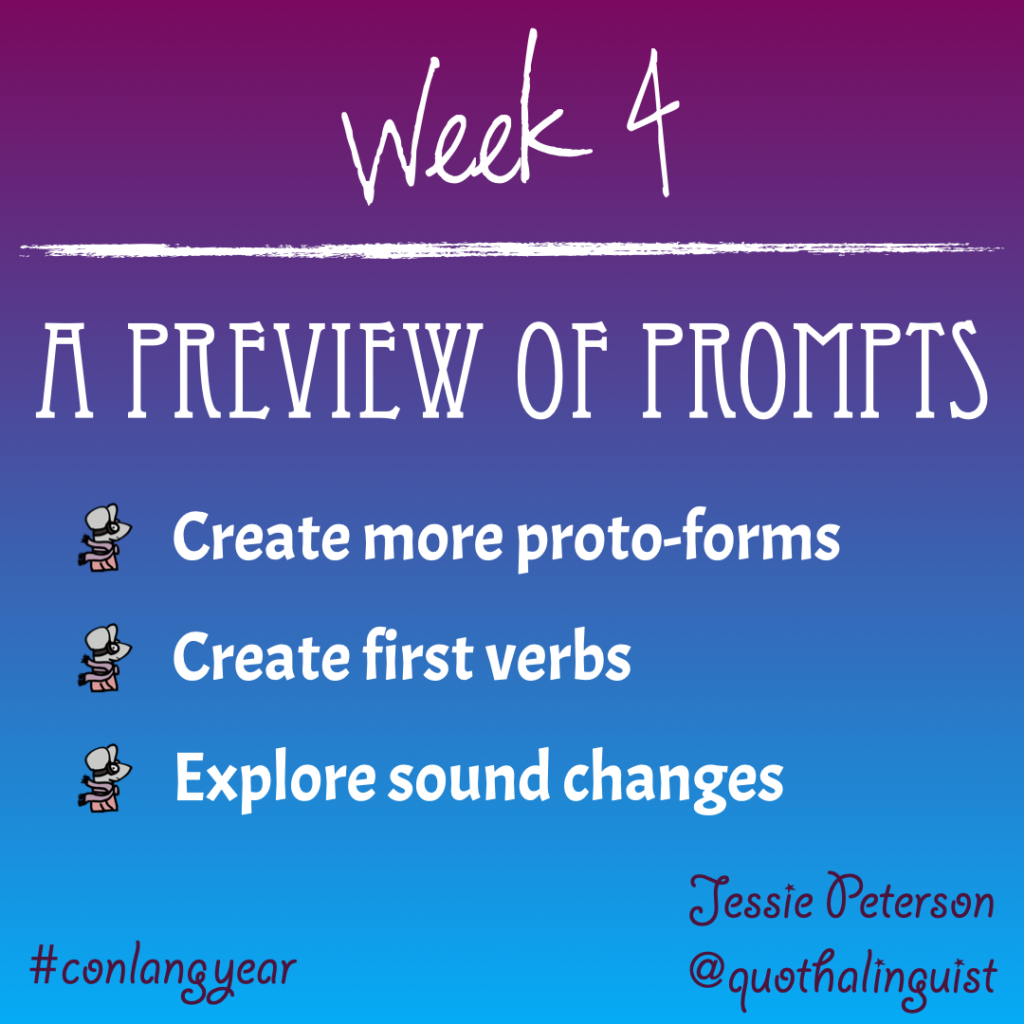
Day 22, January 22
Goal: Create five proto-forms for flora
Note: This will require you to decide how your speakers categorize the flora in their world.
Tip: Not all languages have a generic root for flora types, such as not having a root meaning “tree.”
Work focus: Create/Make/List
Day 23, January 23
Goal: Create five proto-forms for fauna
Note: Creating roots for fauna means thinking about how your speakers categorize different fauna.
Tip: It is often the “pests” we interact with most, such as fleas, ticks, gnats, and mosquitos.
Work focus: Create/Make/List
Day 24, January 24
Goal: Create five basic transitive verb proto-forms
Note: A transitive verb typically occurs with an object (what is affected by the verb’s action).
Tip: Think about how your speakers move about and interact with their world.
Work focus: Create/Make/List
Day 25, January 25
Goal: Create five basic intransitive verb proto-forms
Note: An intransitive verb typically only has one argument: the subject (or the one doing the verb).
Tip: Verbs you might consider creating include “sleep, lie (down), stand, sit, walk, run.”
Work focus: Create/Make/List
Day 26, January 26
Goal: Explore assimilatory sound changes
Note: These changes shift sounds so they are more similar to other sounds in their environment.
Tip: Consonants can shift voicing, manner, and/or placement when assimilating.
Work focus: Learn/Brainstorm/Try
Day 27, January 27
Goal: Explore deletion/reduction sound changes
Note: A sound can be deleted altogether or reduced (e.g. a stop becoming a flap).
Tip: Coda consonants are often prone to deletion or reduction, especially the weak fricatives.
Work focus: Learn/Brainstorm/Try
Day 28, January 28
Goal: Explore fortifying sound changes
Note: Fortification includes changes such as devoicing a voiced sound or turning a glide into a fricative.
Tip: Fortifying a sound often makes it more acoustically distinct from its surroundings.
Work focus: Learn/Brainstorm/Try
